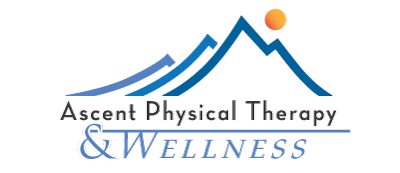What Is Healthy Movement?
Healthy movement is more than muscle engagement. It’s about timing and coordination of many muscles working together. Every body has a particular set of movement patterns; no two are alike. At Ascent, our physical therapists and instructors are aware that your body, your pain, your issue is specific to you. While you might have the same complaint as a previous patient, we assess your unique makeup to develop a healthy movement plan for you.
For all areas of the body, the evidence supports correcting problems associated with how you use your muscles in a functional and coordinated manner (e.g. ensuring proper timing of muscle activation during a task so you get optimal muscle engagement); this differs from the previous philosophy of focusing on exercises for strength and power of individual muscles in isolation(e.g. doing exercises for your quads (leg extensions) and hamstrings (bent knee curls)).
Current research findings show that during muscle activity in healthy subjects that there is a variation in the distribution of motor recruitment within a muscle to minimize fatigue and dissemination of load. This variability or load distribution of motor recruitment within a particular muscle while performing functional tasks is decreased in subjects who have pain. This limitation in the distribution of motor recruitment means that the load is localized to just one or a few specific areas within the muscle. This concentration of load leads to the development of trigger points, tissue overloading & pain, adaptations & alterations of muscle fibers, reduced directional specificity of muscle activity, fatty infiltration, and changes within the sensorimotor system.
By employing proven treatment techniques that effect redistribution patterns of loading within a muscle, reinforced with specific exercises that enhance changes in the sensorimotor system, our clinicians can help to restore healthy & pain free movement. By retraining your brain’s desired movement patterns & habits and focusing on quality of movement you will be able to reduce the irritation of injured areas and improve your recovery. Essentially training your brain to override sub-cortical automatic dysfunctional movement patterns to re-establish or create healthier ones.
By implementing the theoretical and practical elements of current research and clinical experience, Ascent Physical Therapy has developed an assessment framework and retraining strategy that offers a structured approach to help you optimise your movement health.
Every individual has a unique clinical presentation, therefore, no two treatment programs are, or should be the same. Protocol based treatment programs assume that all patients with the same diagnosis have the same etiology. This is rarely the case. Evidence shows us that individualized treatment programs give far superior results than generalized ones. This is where the skill and knowledge of the practitioner comes into play.
True physical therapy is about providing patients with the necessary tools to move, be active and exercise in ways that create favorable tissue loading and efficient pain free movement. Exercises should be patient specific according to their impairment, work, and recreational demands. Patients also need to be made cognitively aware of how these compensating patterns of stability and control are connected to their pain and dysfunction, and given simple strategies to correct them. By controlling directional movement impairments, they can return to their normal activities pain free.
